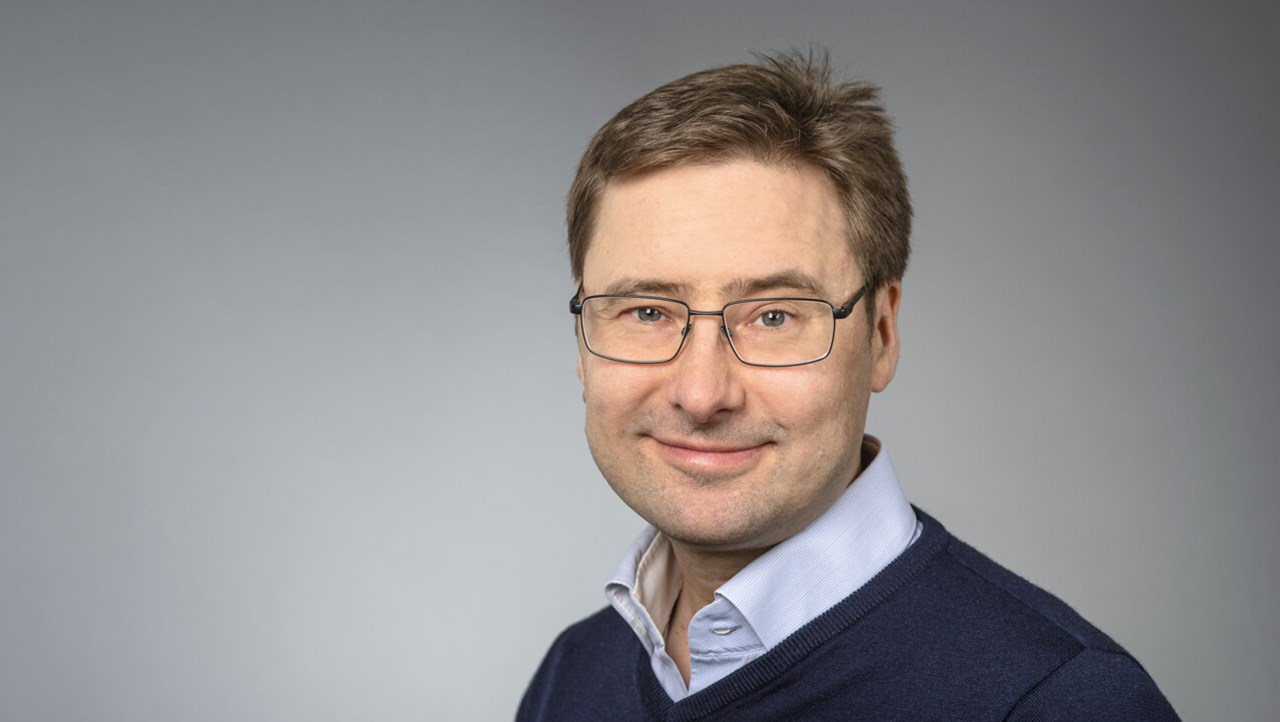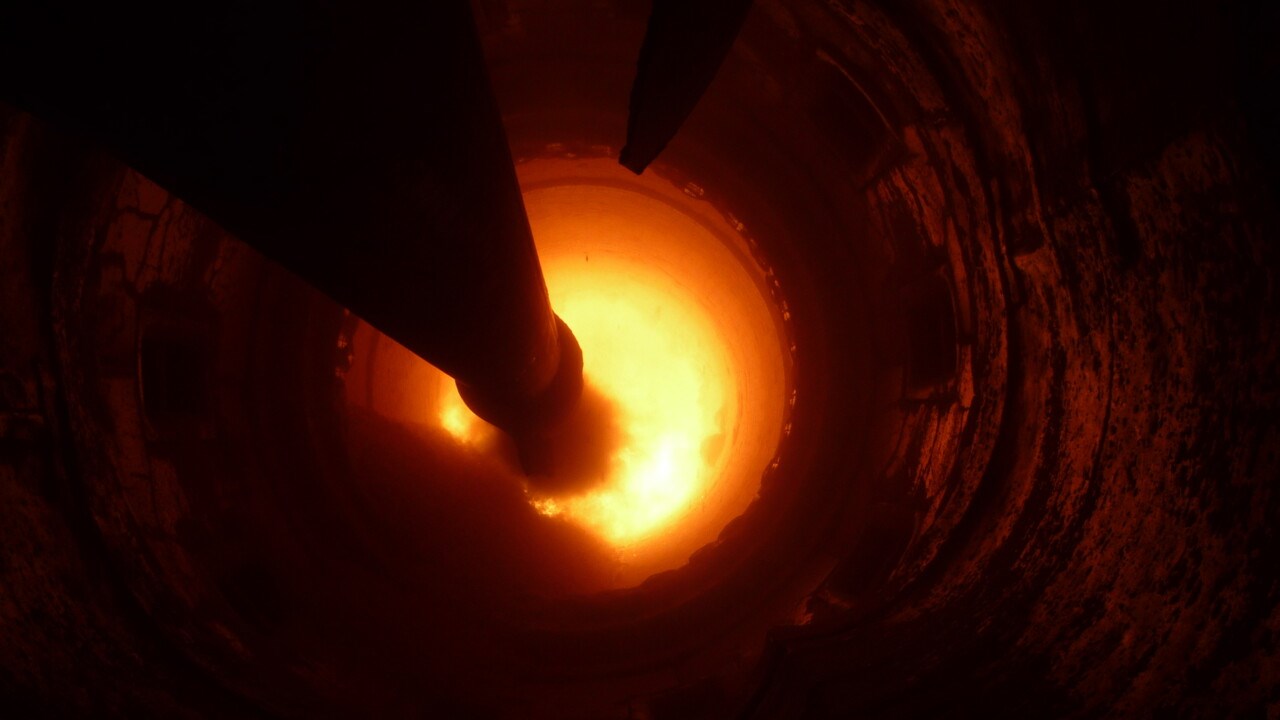NEWS The Centre for Sustainable Cement and Quicklime Production, CHECK, is a platform in which Umeå researchers collaborate with the biggest industrial stakeholders in Swedish cement and quicklime production. The director of the centre, Matias Eriksson, answers five questions.

Matias Eriksson, senior research engineer at the Department of Applied Physics and Electronics (TFE), and director of CHECK.
ImageMattias PetterssonThe Centre for Sustainable Cement and Quicklime Production (CHECK) primarily focuses on high-temperature processes, around 1,300–1,450°C, which is necessary for the refining of limestone to quicklime and cement clinker. Limestone contains the mineral calcite, which is a form of calcium carbonate. When heated, the carbonate is decomposes and a highly reactive calcium oxide is formed at the same time as carbon dioxide is released.
If the limestone is burnt, quicklime is produced. If the limestone is burnt with additives, primarily iron, aluminium and silicon, the results in clinker minerals. The quicklime is used as a raw material in several industrial processes. Cement clinker is used to produce cement which in turn is used to produce concrete.
What are your thoughts about being director?
“It’s an interesting and rewarding role. We are lucky to work with such an important and interesting subject. The centre involves about 35 people from academia and industry, and we are slowly but steadily growing. We have managed to establish a good work environment and I get on well with my colleagues.
The long-term challenge of a leading position lies, as always, in communicating with people. Everyone has feelings, preconceptions and opinions, regardless of where you’re from – industry, academia or a funding body. And I, who has worked a long time outside of academia, am no exception. As director I need to gain the trust of all parties in order to lead the operations. And to do so, an open approach and communication are key.
I’m really thankful for the trust that the university and our industrial partners have shown me by appointing me director,” says Matias Eriksson, senior research engineer at the Department of Applied Physics and Electronics (TFE), and director of CHECK.
What is limestone and where is it found?
“Limestone is a common rock. Deposits that are homogeneous and chemically pure are used for the production of limestone products with varying degree of processing. A great number of limestone-based products are used in industrial value chains. Practically in all of them: the manufacturing of glass, iron and steel, paper and pulp, glass and mineral wool, asphalt, cement and concrete, paint, plastic, gas treatment, water purification, soil improvement, animal feed, etc. I’ve tried to come up with examples of what could be produced without the use of limestone, but I have a hard time coming up with any.”
What are the problems with the current production of cement and quicklime?
“The heavy industry contributes enormously to public welfare, not just financially – the mining and manufacturing industry together with the construction industry represents 22 per cent of the Swedish gross national product, according to Statistics Sweden, but also in terms of quality of life through access to products that enable our modern life. Furthermore, the industry plays a part in social sustainability by offering work opportunities.”
There is no specific problem with the current production of cement and quicklime. The overall problem is the same as for humanity in general – the vast number of people, the extensive spread of humans to the detriment of biodiversity, the mass production and consumption of goods and merchandise, and the pollution and poisoning this causes.
The centre works with the manufacturing processes from a technical perspective. Both the production of quicklime and cement clinker results – due to decomposition of carbonate and fuel consumption – in high specific carbon dioxide emissions. For instance, the centre participates in several projects studying the possibilities of using electricity instead of fuel to generate the necessary high temperatures. An electrically powered process would produce a carbon dioxide gas that could more easily be stored or used as a product, which would render the production process with a zero emission of carbon dioxide.”
Why was CHECK founded?
“The collaboration between the mineral industry and the Department of Applied Physics and Electronics was commenced under the lead of Professor Rainer Backman in 2007. I was a doctoral student during the first project and focused on energy engineering and thermal processes. Since then, and together with our partners Cementa AB, SMA Mineral AB, Nordkalk AB and Swedish Mineral Processing Research Association, we have conducted several successful research projects in various constellations.
In 2017 and after careful reflection, I asked our partners if they were interested in establishing a more long-term research collaboration, and it was a pleasure to hear that everyone was positive. Based upon that, I had the mandate to start making it happen. The centre was established in 2019 to promote longevity, continuity and to take the role as an umbrella organisation for upcoming research projects. Presently, collaboration takes place with the research team Thermochemical Energy Conversion Laboratory, TEC Lab, and Professor Markus Broström at the Department of Applied Physics and Electronics.
The overall purpose of our research is to contribute with novel insights that will benefit society and industry in the aspiration for increased use of new fuels and materials, the improvement of industrial processes, the avoidance of expensive operating problems, the recycling of finite resources, and the minimising of harmful by-products and pollution.”
How have you managed to recruit two employed doctoral students through the Industrial Doctoral School for Research and Innovation already?
“Collaboration with the industry is key for our centre – without it the centre loses its legitimacy. Collaboration with the university’s Industrial Doctoral School has worked really well. The concept is good and we are grateful for the funding it has given us. We will submit our third application this spring.
For instance, the doctoral students from the Industrial Doctoral School doctoral have access to a network of doctoral students, in addition to the network at the centre. This gives further perspectives to doctoral studies, which is something our doctoral students have appreciated. The funding from the Industrial Doctoral School also enables placements in the industry, which is highly instructive for both the doctoral students and the industry, and it helps both parties to advance their networks. You see, it’s not just academia that needs the industry, the industry also needs academia.”

Lime kiln from the inside.
ImageMatias ErikssonComes from: Kimito, Finland.
Lives in: Uppsala.
Family: Wife, daughter and a huge extended family.
Research topics: Mineral industry materials and thermal processes.
Interests: Forest hiking. Kitchen gardening and pot plants. Book and vinyl record collection. Growing in life with my wife and daughter.
Favourite Sunday pleasures: Take walks. Listen to music and play the Muffin or Mumin game. Watch a film and follow politics. Read. Lay a jigsaw puzzle.
Favourite TV series: “Tunna blå linjen” on SVT Play.
Reads: A mixture of language and content. Right now, I read Cement Chemistry by Taylor; Kymmenen vaatimusta vapaalle ihmiselle by Ehrnrooth; The Boy Crisis by Farrel & Gray; and Hocus Pocus Alfie Atkins by Bergström.
Favourite thing about limestone, quicklime and cement: The high-temperature chemistry, and my colleagues in the field.
Post-pandemic plans: Meet family and friends. Take walks. Grow things in my garden. Read and reflect on how the pandemic has affected us and our society. Experiment with decomposed calcite and dolomite in normal atmosphere and in high temperatures in the lab.